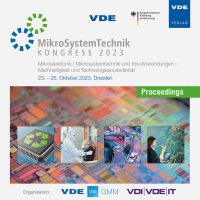Hermetic packaging for photonic integrated circuits on glass interposers
Konferenz: MikroSystemTechnik Kongress 2023 - Kongress
23.10.2023-25.10.2023 in Dresden, Deutschland
Tagungsband: MikroSystemTechnik Kongress 2023
Seiten: 7Sprache: EnglischTyp: PDF
Autoren:
Weber, Daniel; Kroehnert, Kevin; Kirsch, Oliver; Schroeder, Henning; Schiffer, Michael (Fraunhofer IZM, Germany)
Schoening, Niklas; Ambrosius, Norbert (LPKF Laser & Electronics SE, Garbsen, Germany)
Schneider-Ramelow, Martin (Fraunhofer IZM, Germany & TU Berlin, Germany)
Inhalt:
In this work, we will present a novel encapsulating technology for packages using a glass interposer with through glass vias (TGVs) for photonic packaging. In the past, and even today, photonic packaging is usually performed in a packageby-package approach. This means the chips housed in such a package are typically placed and interconnected in a serial way, resulting in limited throughput and high cost. The project PhotonicLEAP (ICT-36-2020ii) is developing a disruptive technology to change the way optical packaging is done using glass interposers with TGVs and a wafer-level approach for assembly and packaging. This package will later include optics, photonic integratedcircuits (PICs), cavities and ther- mal vias for heat dissipation. One of the major challenges is capping and hermetical sealing of such packages with the ability to seal more than one package or even an entire wafer at once without thermal stressing of the photonic assemblies on the interposers and inside the package. To create such packaging technique, glass interposers are manufactured with a specific metallic sealing ring. Gold metallization is used here, which is also applied for the final pad metallization layer inside the package. A glass cap is processed using Laser-Induced Deep Etching (LIDE), providing a cavity as well as an optically transparent sealing area. The seal is created by bringing both wafersintoproximity (0-2 µm) with each other and then using the sealring as a local absorption structure for a continuous wave laser. Depending on the exact setup, it is possible to form either “metal to metal”, “glass to metal” or “glass to glass” sealings. We have been exploring various sealing geometriesand laser parameters to achieve an optimal continuous sealing, have been performing measurements demonstrating the hermetic capabilities of this packaging concept, and have been comparing them to other sealing approaches at low temperatures.


